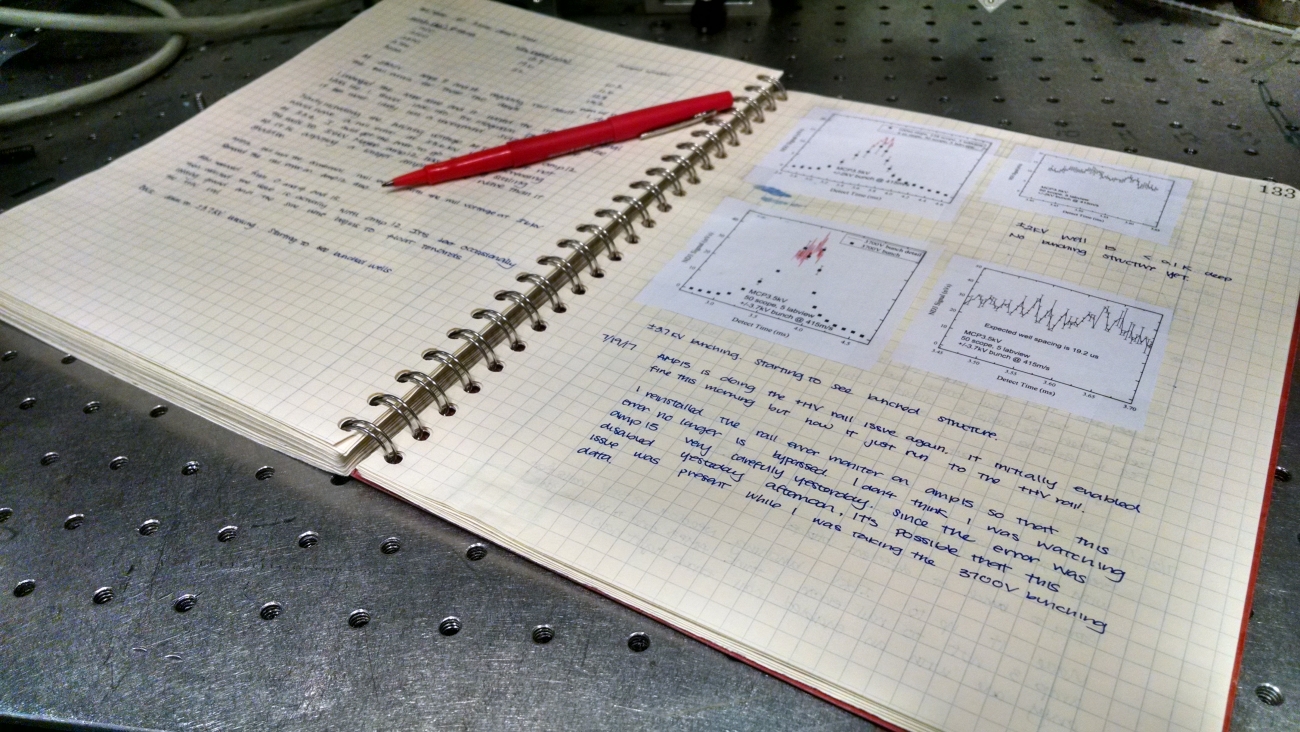Laboratory Reports
Individual Assignment
Laboratory reports are individual assignments. After you have collected the data with your group, you must work on your own, producing your own analysis, graphs, and text. Copying code, text, or analysis from other group members is expressly forbidden.
Plagiarism
Please review the academic integrity section in the syllabus. Two important forms of academic misconduct relevant for the lab reports include
The use of generative AI software such as ChatGPT or GitHub Copilot is expressly forbidden in this course.
Verbatim copying or paraphrasing somebody else’s report, paper, web-based entry, book, or any other source without use of quotation marks and citation (verbatim text) or citation (paraphrasing).
Reporting Mechanics
This course will require you to turn in hand-written reports using either pen or pencil. Reports are due on Monday at the beginning of the lab, at the date outlined in they syllabus. You are required to use a single bound report book for all reports. Reports will be graded and returned the same week on Wednesday so you can prepare the next report.

The rubric may require either hand-drawn figures or computer-generated figures. Computer-generated figures must be printed and pasted into the notebook. We are not prescribing the brand of the notebook you should use. However, it must state the course number, the quarter/year, your name and your student ID to identify you. A list of example notebooks you may want to consider is below. We do not endorse any of the vendor or products.
Report Grade
Each report has a specific rubric that outlines the required sections and components of the grade. In general the components are
Prelab Summary
Prelab Summary
You will have to provide a hand-written prelab summary. The prelab summary is a sheet of paper with the date, the title of the lab, your name, your student ID, and a hand-written paragraph that summarizes the lab purpose and tasks you are going to perform for a specific week. Use this activity to formulate any questions you may have. Your pre-lab summary will be collected at the beginning of the lab on Monday and also serves as a record of attendance.
Attendance Sheet
Attendance Sheet
You will have to provide an attendance sheet for Wednesday labs. The attendance sheet should contain the date, the title of the lab, your name, and your student ID. It will be collected at the beginning of the lab on Wednesday.
Report
Report
You will provide a hand-written report that is submitted on Monday at the beginning of the lab session on the date indicated in the syllabus. Detailed guidance is provided for each report. Don't forget to paste a copy of the grading rubric at the end of each report.
Rationale for Reporting Scheme
It may seem anachronistic that I request hand-written reports and that I take a strong stance against using AI. Writing by hand is difficult. I wrote the lab reports by hand and it made my hand hurt. It was significantly slower than writing it in a word processor. Computers and AI are powerful technologies that may appear to make your life easier. However, there is growing evidence that computers and AI may do far more harm than doing good in education. While the following sections focus more on the harms of AI, some of the concerns also apply to just using word processors.
The main concern with AI in education (and beyond) is that when relying on AI, students will never learn critical skills like original thinking, writing, or coding. Even more concerning, there is emerging evidence that using generative AI causes underperformance at neural, linguistic, and behavioral tasks. (Read, reduces your IQ). It is an existential threat to higher education because it facilitates plagiarism deployed at scale. Generative AI is highly addictive because it makes hard things seemingly easy. It provides an escape hatch for deadline pressure and the general feeling being overwhelmed by the difficulty of an assigned task. Yet, a student that is cutting and pasting images and text from manuals or ChatGPT into a word document is enrolled in a class in cutting and pasting class and not a university course. The bitter truth is that learning requires forcing ourselves to do hard things.
The cognitive science research and evidence from observing student behavior seems to be clear. Reducing the cognitive load makes your brain atrophy. Conversely, taking handwritten notes, rather than typing, helps committing material to memory leads to higher achievement. Students are human beings. Nothing will stop them from using ChatGPT and other shortcuts if they are available. For this reason it is time to force ourselves to slow down.
Writing by hand is thinking on paper.
Writing by hand has some amazing benefits. It requires us to first complete the analysis and organize the material before starting to write. Drafting figures with a pencil, and/or annotating graphs with pencil makes us pause and think about the data. Because handwriting is slower than typing, and less amenable to later reshuffling like we do in a word processor, it requires us to think more clearly about what we write. The assignments are individual because I want every student to have the benefit of fully understanding the experiment, analysis and implications. Because the reports are a significant amount of work, I have reduced the number of labs to three, thus freeing time for you to focus on analysis and reporting.
References
Kosmyna et al. (2025). Your Brain on ChatGPT: Accumulation of Cognitive Debt when Using an AI Assistant for Essay Writing Task. https://doi.org/10.48550/arXiv.2506.08872.
Flanigan, A.E., Wheeler, J., Colliot, T. et al. Typed Versus Handwritten Lecture Notes and College Student Achievement: A Meta-Analysis. Educ Psychol Rev 36, 78 (2024). https://doi.org/10.1007/s10648-024-09914-w.
Clay Shirky: The Only Real Solution to the A.I. Cheating Crisis. NY Times.